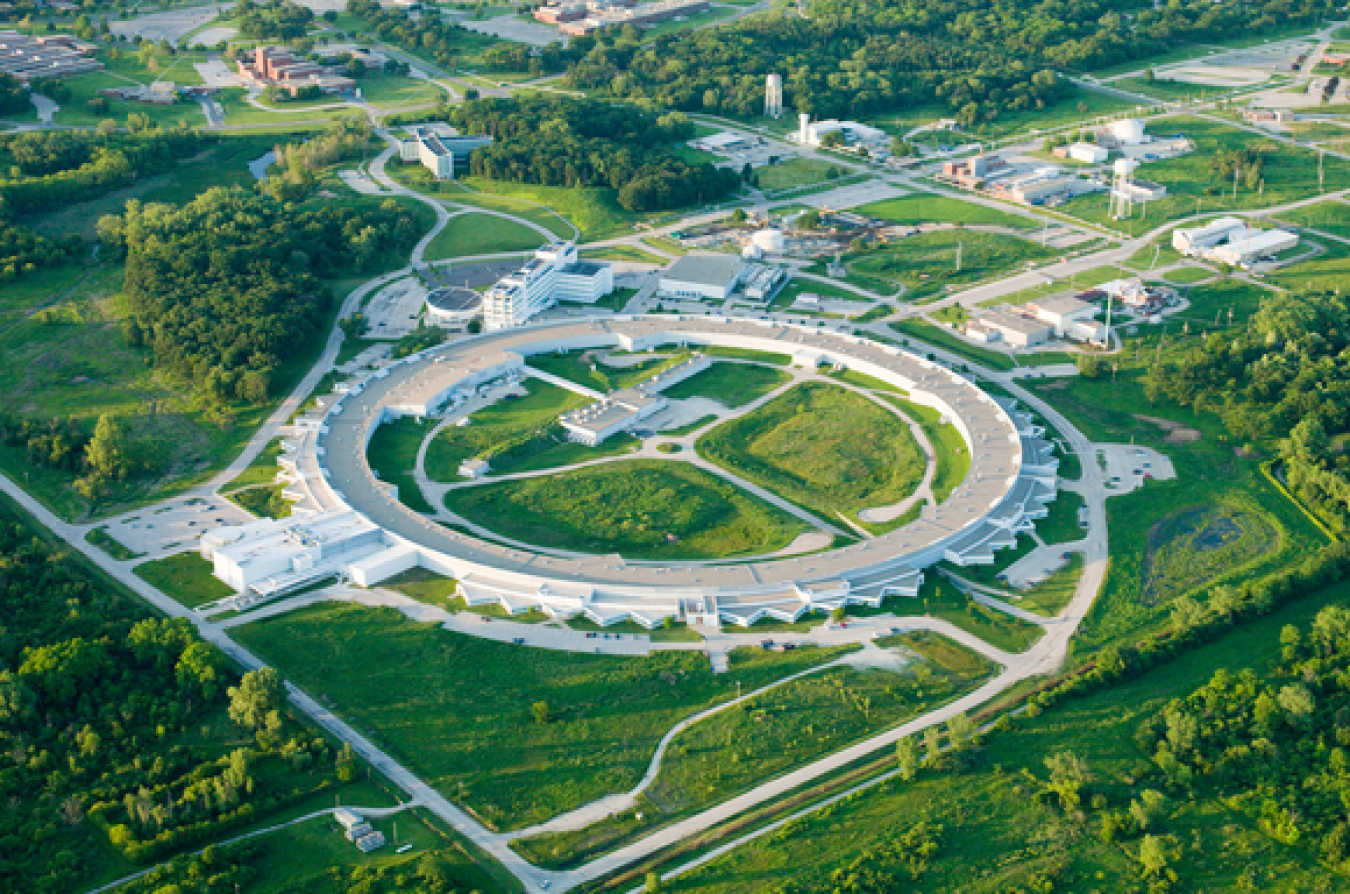Bioprose Blog: Catalyst Collaboration―Argonne Accelerates Biofuel Production Technology
February 22, 2018Author: Meltem Urgun-Demirtas, Laboratory Relationship Manager, Argonne National Laboratory
Read Meltem's bio ►
Meet the other bloggers ►
Return to Bioprose blog ►
Bioprose Blog
Argonne National Laboratory (ANL), in partnership with the National Renewable Energy Laboratory (NREL), is using its unique technical capabilities, world-class instruments, and innovative techniques to develop catalysts that industry can use to economically bring biofuels to the marketplace.
With funding from the U.S. Department of Energy’s (DOE’s) Bioenergy Technologies Office (BETO) totaling nearly $1.3 million since 2013, ANL researchers are using X-ray spectroscopy to move the nation closer to achieving cost-effective production of renewable liquid transportation fuel. Biomass-based fuels, or biofuels, can greatly contribute to the United States’ energy independence, decreasing the nation’s reliance on foreign energy sources. To make biofuels, scientists need to break down biomass, an emerging renewable feedstock that utilizes domestic resources; to do so, they often use enzymes, or catalysts.
So, how does ANL’s process work? Using X-ray absorption spectroscopy to examine catalysts, ANL scientists first calculate the size of metals on the surface, as well as how they interact and whether they are segregated or independent. Members of the research team then determine whether the material is stable and how it changes over time; they are able to see even the tiniest particles as they migrate along the surface. From this data, scientists draw conclusions about a catalyst’s viability for breaking down biomass.
A team of ANL researchers is working to enable more efficient biofuel production by providing industry with access to instruments and expertise that can help them develop better catalyst technologies. For example, at ANL’s Advanced Photon Source, a DOE user facility, scientists use operando techniques in experiments under real-world conditions to characterize catalysts in action for partner researchers at NREL. (Operando techniques refer to studying the catalyst structure during the reaction, as opposed to post-mortem techniques, where the catalyst is collected and studied after the reaction.) Using X-ray absorption spectroscopy to examine catalysts, ANL scientists can see what’s happening at the molecular level in real time. NREL collaborators have then used these data to create synthetic techniques that optimize catalyst properties under reaction conditions while maximizing performance and reliability.

Scientists at ANL’s Advanced Photon Source use X-ray spectroscopy to characterize catalysts for converting biomass into fuels.
ANL utilized the operando spectroscopy at the Advanced Photon Source to support NREL’s work in indirect liquefaction. In indirect liquefaction, biomass is gasified to synthesis gas, which, in one configuration, is upgraded to dimethyl ether and then subsequently upgraded to liquid fuels. A key challenge is to efficiently convert dimethyl ether to liquid fuels without producing less-desired side streams or excessive amounts of less-valuable isobutane. NREL researchers developed a copper-based zeolite catalyst that doubled the productivity of their process for converting compounds produced from biomass-derived synthesis gas to higher gasoline-range alkanes. They upgraded the reaction byproducts of non-gasoline-range alkanes into higher alkanes to increase the efficiency of the reaction process, which can result in higher fuel yields.
Using X-ray spectroscopy, ANL scientists generated results leading to the development of a computer model that explains how NREL’s copper-based zeolite catalyst functions. Specifically, experimental results illustrated that both metallic copper and ionic copper are responsible for the catalyst performance. The model provides the information to develop synthetic approaches for producing next-generation catalysts to further improve process efficiency. The results of this work are published in the April 2017 and February 2015 editions of ACS Catalysis. This work helped reduce the modeled cost of liquid fuels produced via indirect liquefaction by around $1/gasoline gallon equivalent.
In another NREL and ANL collaboration, NREL researchers developed a gallium-modified zeolite catalyst. With help from ANL’s catalysis program, the researchers resolved an important issue regarding the chemical dynamics of gallium during reaction conditions. Specifically, gallium-modified zeolites are used for alkane dehydrogenation, a technology that industry uses to manufacture chemical precursors to plastics. The prevailing theory was that the gallium(III) electron configuration undergoes reduction to gallium(I) during the reaction. By studying a range of gallium-modified particles, ANL found that gallium(III) structure changes to gallium(III) hydrides under the same reaction conditions. The results of this study were published in Catalysis Science and Technology.
ANL scientists are now directly supporting industry in overcoming catalyst challenges. With funding from BETO’s Chemical Catalysis for Bioenergy Consortium, ANL will work on two agreements for using X-ray absorption spectroscopy to understand the mechanisms of catalytic upgrading of biochemical intermediates. As part of one agreement, ANL will help Gevo understand the mechanisms of mixed metal oxide catalysis. A second agreement with Vertimass will improve understanding of ethanol upgrading. In both cases, ANL’s work will enable industry to optimize catalyst synthesis methods for improved performance.
Catalytic processes are critical to our nation’s successful liquid transportation fuel production and chemical manufacturing, as efficient catalysts can increase the productivity and reduce the cost of converting biomass into biofuels and co-products, including bioproducts and biopower. ANL’s research to develop these processes aligns with BETO’s goal of supporting early-stage applied research and development to develop cost-competitive biofuels, which can utilize America’s abundant biomass resources, create new jobs, and increase U.S. energy independence
Dr. Meltem Urgun-Demirtas

Meltem Urgun-Demirtas is a group leader of process development research in Argonne National Laboratory’s Energy Systems division, where she brings over 15 years of diverse experience in waste and water treatment, biofuels production, and materials synthesis for energy and environmental applications. She has extensive experience in design and operation of chemical and bioprocesses from bench to field scale, techno-economic assessment, modeling and optimization of processes. She is a fellow of the Northwestern University—Argonne Institute of Science and Engineering. Dr. Urgun-Demirtas has published over 30 journal papers and 50 conference papers and holds four patents/patent applications. Prior to working at Argonne, she was a research engineer at BP North America. She received a Bachelor of Science in chemical engineering and a Ph.D. in environmental engineering.
Meet our other bloggers ►
Return to Bioprose blog ►


